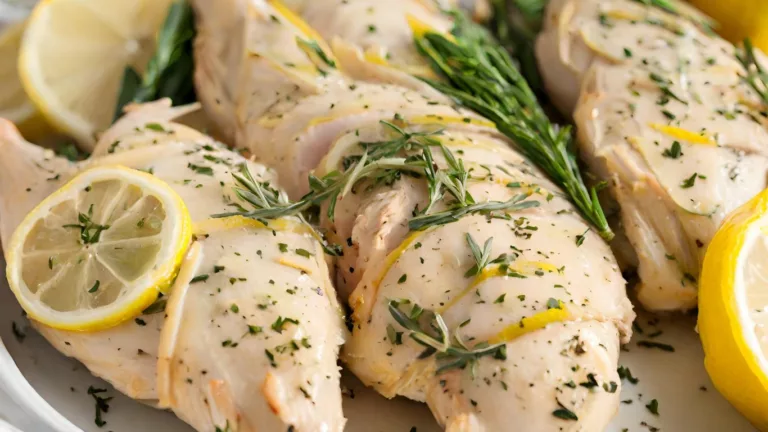How to Eat Smaller Meals for GERD Relief Without Feeling Hungry
Let’s be real—if you’re dealing with GERD, eating can sometimes feel like a battle. You take a bite, and suddenly, that familiar burning sensation creeps up. Sound familiar? One of the biggest game-changers for managing GERD is learning how to eat smaller meals for GERD relief. I know because I’ve been there—not just as an expert but as someone who’s seen firsthand how meal size impacts acid reflux. The truth is, it’s not just about what you eat, but how you eat. And if you’re used to big, hearty meals, downsizing can feel like an impossible challenge. But don’t worry—I’ve got you covered.
Why Eating Smaller Meals is a Game-Changer for GERD

Here’s the deal—your stomach isn’t a bottomless pit (even though some of us wish it were). When you overload it with food, your digestive system struggles to keep up. And if you have GERD, that excess food puts pressure on your lower esophageal sphincter (LES)—the muscle that keeps stomach acid from creeping up into your esophagus.
When the LES weakens or gets overwhelmed, acid reflux happens. That’s when you get heartburn, regurgitation, and that awful lump-in-the-throat feeling. But eating smaller meals throughout the day can ease this pressure and help you avoid those painful symptoms.
How Big Meals Make GERD Worse
- Increased stomach pressure: Overeating forces the stomach to expand, making it easier for acid to escape.
- Slower digestion: Large meals take longer to break down, keeping stomach acid around for extended periods.
- Higher acid production: The more food you eat, the more acid your stomach produces to digest it.
- Increased bloating: Gas buildup from heavy meals can push against the LES, triggering reflux.
Practical Tips on How to Eat Smaller Meals for GERD

If you’ve been eating big meals your whole life, switching to smaller portions can feel weird at first. But trust me—it’s worth it. Here are some simple, practical ways to make it easier.
1. Use Smaller Plates and Bowls
This is a sneaky little trick, but it works! Your brain associates a full plate with a full meal, so using smaller dishware can make a reduced portion feel just as satisfying.
2. Eat Slower and Savor Each Bite
I used to inhale my food without thinking—big mistake. When you eat too fast, you don’t give your brain enough time to register that you’re full. Chew thoroughly, set your fork down between bites, and really taste your food. Not only does this help digestion, but it also makes smaller meals feel more satisfying.
3. Plan for 5-6 Smaller Meals a Day
Instead of three big meals, break your eating schedule into 5-6 smaller meals spaced out every 3-4 hours. This keeps your stomach from getting too full at any given time.
4. Balance Your Macros
A small meal shouldn’t just be a handful of crackers. To keep yourself full and satisfied, aim for a mix of:
- Lean proteins (chicken, fish, tofu, eggs)
- Healthy fats (avocado, nuts, olive oil)
- Complex carbs (brown rice, quinoa, whole grains)
- Fiber-rich veggies (spinach, carrots, cucumbers)
5. Avoid Eating Late at Night
Eating late is a GERD nightmare. When you lie down right after a meal, gravity can’t help keep stomach acid where it belongs. Try to finish your last meal at least three hours before bedtime.
The Role of Mindful Eating in GERD Management

Let’s talk about something that most people overlook—how you eat. Your eating habits play a huge role in GERD management, and mindful eating is a game-changer.
What is Mindful Eating?
Mindful eating is all about paying attention to what you’re eating and how your body responds. It helps you recognize hunger cues, prevents overeating, and improves digestion.
How to Eat Mindfully for GERD Relief
- Eliminate distractions: Turn off the TV, put your phone down, and focus on your meal.
- Chew your food thoroughly: The slower you eat, the easier it is on your digestive system.
- Listen to your body: Stop eating when you feel satisfied, not stuffed.
- Drink between meals: Instead of chugging liquids with meals, sip water between meals to avoid stomach distension.
Shifting to smaller meals and mindful eating takes practice, but once you get the hang of it, your digestive system will thank you. Trust me—your GERD symptoms will become way more manageable, and you won’t have to live in fear of every bite you take.
How to Make Smaller Meals Feel More Satisfying

Alright, so we know smaller meals help with GERD, but let’s be honest—if you’re used to big portions, downsizing can feel like a struggle. I remember when I first started making this change, my stomach felt like it was shouting, ‘Hey! Where’s the rest of my meal?’
Luckily, there are plenty of ways to make small meals feel just as satisfying as big ones—without leaving you hungry an hour later.
1. Load Up on Fiber and Protein
Here’s a secret: fiber and protein work like magic when it comes to satiety. They keep you full for longer, preventing those annoying hunger pangs that make you want to raid the fridge.
- High-fiber foods: Lentils, chickpeas, flaxseeds, and non-starchy veggies.
- Lean protein options: Greek yogurt, turkey, salmon, tofu, and eggs.
Pairing these two nutrients together in every meal will make a huge difference in how satisfied you feel.
2. Embrace Healthy Fats
Don’t be afraid of fats—the good ones help you feel full and satisfied without aggravating GERD. Stick to sources like:
- Avocados
- Almonds and walnuts
- Olive oil
- Chia and flaxseeds
Just be mindful of portion sizes since too much fat at once can still trigger reflux.
3. Hydrate the Right Way
Sometimes, what we think is hunger is actually thirst. But chugging a huge glass of water with your meal? Not the best idea. Too much liquid can dilute digestive enzymes and increase stomach pressure.
Instead, try sipping on water between meals rather than during, and if you need a beverage while eating, keep it to small sips.
4. Slow Down and Savor
Ever notice how quickly you feel full when you eat slowly? That’s because it takes about 20 minutes for your brain to catch up with your stomach. If you scarf down your food, you’re more likely to overeat. Instead, take smaller bites, chew thoroughly, and actually enjoy your meal.
Smart Snacking Strategies to Prevent Overeating

Let’s talk snacks. The right ones can keep you from getting too hungry between meals, but the wrong ones can send your GERD into overdrive. Here’s how to snack the smart way.
1. Stick to GERD-Friendly Snacks
Not all snacks are created equal. Some can keep reflux in check, while others make it worse. The best GERD-friendly snacks include:
- Almonds (in moderation, since too many can be high in fat)
- Oatmeal (fiber-rich and soothing for digestion)
- Bananas (low-acid and easy on the stomach)
- Rice cakes with almond butter (a light but satisfying combo)
2. Avoid Trigger Foods
It’s tempting to grab a bag of chips or some chocolate when you need a quick snack, but trust me, you’ll regret it later. Some of the worst snacks for GERD include:
- Citrus fruits: Oranges, grapefruits, and lemons are way too acidic.
- Chocolate: It relaxes the LES, making reflux worse.
- Fried or greasy snacks: These take forever to digest and increase stomach acid.
- Carbonated drinks: Bubbles = bloating = more reflux.
3. Keep Snacks Small
Remember, snacking should prevent you from getting too hungry—not act as a full meal replacement. Stick to small portions so you don’t overfill your stomach and trigger reflux.
Meal Timing: When You Eat Matters Just as Much as What You Eat
It’s not just what you eat but when you eat that makes all the difference. Poor meal timing can make GERD symptoms ten times worse. Here’s how to time your meals right.
1. Space Out Your Meals Evenly
If you go too long without eating, you might end up overcompensating with a bigger meal later (hello, reflux). Instead, aim for meals every 3-4 hours to keep your stomach happy.
2. Stop Eating at Least 3 Hours Before Bed
This one is huge. Lying down with a full stomach is an invitation for acid reflux. Make dinner your last meal of the day, and if you need a light snack, choose something gentle like oatmeal or a banana.
3. Listen to Your Body
Some people do great with five small meals a day, while others prefer three moderate meals with a snack or two. Experiment to see what works best for you, but always prioritize consistent, balanced eating over random, heavy meals.
By making smart choices with meal sizes, timing, and snacking, you’ll set yourself up for better digestion and fewer GERD flare-ups. And trust me—your esophagus will thank you!
Case Studies & Real-Life Examples

It’s one thing to read about the benefits of eating smaller meals for GERD, but it’s another to hear how real people have transformed their digestion by making this change. Let’s dive into a few examples.
Case Study 1: Mark’s Struggle with Late-Night Eating
Mark, a 42-year-old teacher, used to eat heavy dinners around 9 PM and would often experience severe heartburn at night. His GERD symptoms were getting so bad that he relied on antacids daily. After switching to smaller, balanced meals and eating dinner by 6:30 PM, he noticed a huge improvement. Within weeks, he was sleeping better and no longer waking up with that awful burning sensation.
Case Study 2: Sarah’s Portion Control Journey
Sarah, a 35-year-old mother of two, struggled with portion control. She would often eat until she felt stuffed, which led to bloating and acid reflux. After switching to smaller plates, eating more frequently, and practicing mindful eating, she found that her symptoms became more manageable. The best part? She never felt deprived—just more in tune with her body’s hunger signals.
Case Study 3: James and the Power of Meal Timing
James, a 50-year-old fitness coach, had been eating three large meals a day, thinking it was the best approach for energy. But GERD kept interfering with his workouts. By spacing his meals every 3-4 hours and reducing portion sizes, he found that he could fuel his body without triggering acid reflux. Now, he enjoys more energy without the discomfort.
Key Takeaways: What You Need to Remember
We’ve covered a lot, so let’s break it down into a few key points:
- Eating smaller meals reduces stomach pressure and prevents acid reflux.
- Portion control can be made easier by using smaller plates and slowing down.
- Healthy snacking prevents overeating but should be GERD-friendly.
- Meal timing matters—avoid late-night eating and space out meals evenly.
- Mindful eating helps prevent overconsumption and improves digestion.
FAQs
Still got questions? Let’s clear things up.
1. How many meals should I eat per day for GERD?
Most people with GERD do best with 5-6 smaller meals spaced throughout the day. This keeps the stomach from becoming too full and reduces reflux triggers.
2. What are some quick, GERD-friendly meal ideas?
- Breakfast: Oatmeal with almond butter and banana slices
- Lunch: Grilled chicken with quinoa and steamed vegetables
- Dinner: Baked salmon with roasted sweet potatoes
- Snacks: Greek yogurt with honey, rice cakes with hummus
3. Can I still eat my favorite foods?
Yes—but moderation is key. If you love spicy food, coffee, or chocolate, try reducing the portion size instead of cutting them out completely. Some people tolerate small amounts without major flare-ups.
Bonus: Additional Resources or DIY Tips
If you’re ready to take your GERD management to the next level, check out these additional resources:
- Mayo Clinic: GERD Treatment
- National Institute of Diabetes and Digestive and Kidney Diseases
- WebMD: Acid Reflux Diet
DIY Tips for Better Digestion
- Try keeping a food diary to track which foods trigger your reflux.
- Experiment with smaller utensils—a teaspoon instead of a tablespoon can help slow eating.
- Use meal prepping to control portion sizes and avoid last-minute, unhealthy choices.
Appendix: References, Disclaimer, and Call to Action
| Source | Link |
|---|---|
| Mayo Clinic | Visit |
| National Institute of Health | Visit |
| WebMD | Visit |
Disclaimer
This article is for informational purposes only and should not be considered medical advice. Always consult a healthcare professional before making dietary changes.
Final Thoughts & Call to Action
Managing GERD doesn’t mean you have to sacrifice delicious meals. By eating smaller portions, making smart food choices, and timing meals properly, you can enjoy food without the discomfort of reflux. Trust me—I’ve been there, and these changes really work.
Have you tried any of these tips? Let me know in the comments! And if you found this helpful, share it with someone who could use some GERD relief.

Camellia Wulansari is a dedicated Medical Assistant at a local clinic and a passionate health writer at Healthusias.com. With years of hands-on experience in patient care and a deep interest in preventive medicine, she bridges the gap between clinical knowledge and accessible health information. Camellia specializes in writing about digestive health, chronic conditions like GERD and hypertension, respiratory issues, and autoimmune diseases, aiming to empower readers with practical, easy-to-understand insights. When she’s not assisting patients or writing, you’ll find her enjoying quiet mornings with coffee and a medical journal in hand—or jamming to her favorite metal band, Lamb of God.






